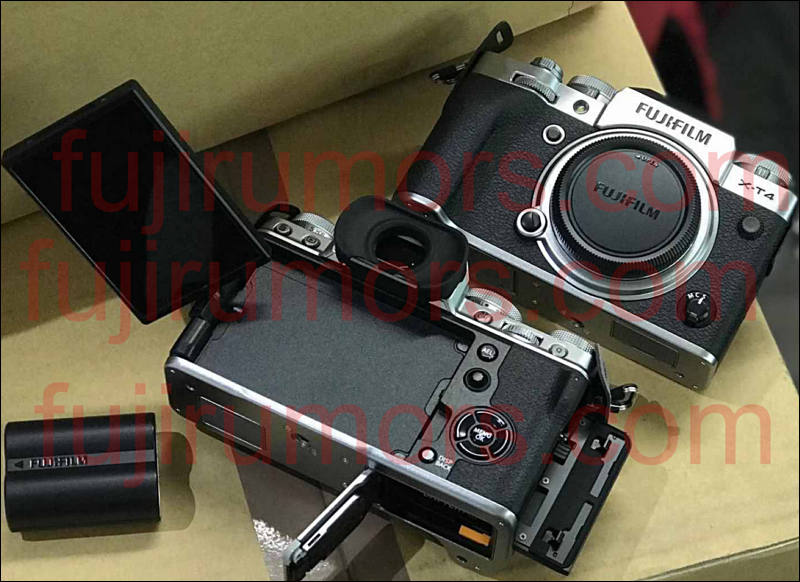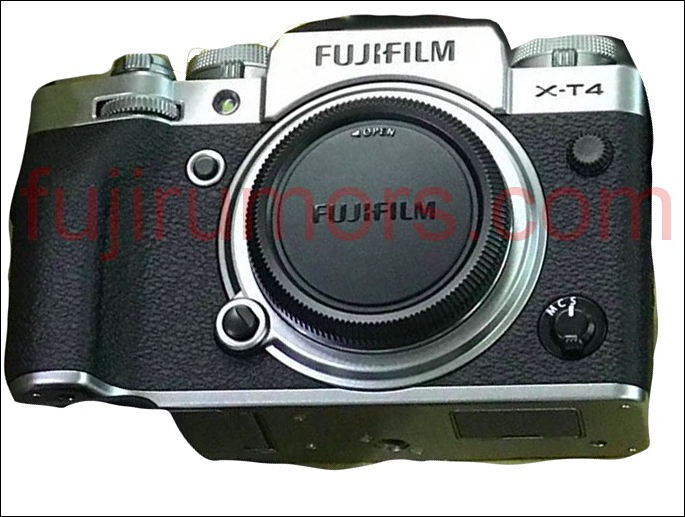
-
New stuff (from Ehotozine)
Physically new things
- IBIS - in-body image stabilisation (5-axis, sensor-shift)
- New shutter unit - 15fps using mechanical shutter, instead of 11fps
- up to 300000 shutter actuations (2x from old one)
- New battery - for extended battery life
- 1.62million dot vari-angle touch-screen (instead of 1.04m dot 3-way tilting touch-screen)
- Lockable eye-cup
- Bigger AF-on button
- Still / Movie switch (replaces metering switch)
- Drive mode dial has an updated order
- Top function button has been moved
- Q-Button has been moved
- Detachable SD card slot cover
- Strap clips have been strengthened
- Size increased - with a larger grip
- Better battery life (500 vs 390 shots), up to 1450 shots with battery grip
- Weight increase
- £1549 RRP price increase from current T3 one of £1199
New software stuff
- Eterna bleach bypass
- New AF algorithms
- Improved Movie functionality, including FullHD at 240fps
- Digital Image Stabilisation option added for video
- Separate Quick menus depending on whether shooting stills or video
- MP4/AAC format added
- Record on both SD cards at the same time (same format)
- F-Log view assist - apply BT.709 gamma curve
- Mic jack setting - MIC level / LINE level
-
PR
FUJIFILM North America Corporation is proud to announce the launch of the FUJIFILM X-T4 (hereinafter "X-T4"), a flagship model of the X Series family of mirrorless digital cameras.
The X-T4 is an astounding imaging tool, packing a newly designed IBIS, a quiet new shutter unit, a new vari-angle LCD screen, a new Eterna Bleach Bypass Film Simulation, and a new, large-capacity, battery all into a compact and lightweight camera body. This camera is the perfect tool for today's image makers and is an ideal multi-functional solution for visual storytellers to use in creating their stories.
More information about the key features of X-T4:
Designed for Quality and Speed
Fujifilm's state-of-the-art X-Trans CMOS 4 sensor and X-Processor 4 combination sits at this camera's core, pairing this exceptional, 26.1MP, back-side illuminated sensor with a powerful quad-core CPU to produce images with wide dynamic range and incredible image quality, doing so with lightning-fast processing and precision AF performance, right down to -6EV.
IBIS Puts Stability in the User's Hands
A huge part of creating great photos or videos is being in the right place at the right time -- and that often means making handheld images to get to the heart of the action. X-T4's five-axis In-Body Image Stabilization (IBIS) provides up to 6.5 stops1 of image stabilization to make sure that, even in the midst of all the excitement, images remain steady and sharp. Combine this with the new four-axis Digital Image Stabilizer, and there's lots of room to maneuver.
Steady, Reliable Performance
For any serious image maker, having a tool that can be relied upon to perform flawlessly whenever it is required is extremely important. For this reason, X-T4 features a newly developed mechanical shutter that is the fastest and most robust in the history of the X Series. Not only can it make 26.1 Megapixel images at 15 frames per second, but it is also rated for 300,000 actuations. Combined with its larger capacity battery that is capable of up to 600 frames per charge2, X-T4 has the power and the durability to give users the peace of mind that they'll never miss the perfect opportunity.
Find the Best Angle for the Story
When chasing the perfect image, versatility is key. The 1.62 million pixel vari-angle touchscreen LCD featured on X-T4 can be adjusted to make it visible from a wide range of positions. This not only provides a high-quality monitor to frame with, but also provides quick and simple controls when they're needed most. On the flip side, there are times when it's necessary to minimize the light and distractions that a screen can create. That's why X-T4's LCD has been designed to easily fold away so it is completely hidden from view, leaving the updated 3.69 million pixel/100fps electronic viewfinder to focus on the moment at hand.
When a Story Needs Movement
The modern image maker is blurring the lines between photography and videography, and X-T4 has been designed to celebrate this new generation of hybrid creativity. With the simple flick of a switch, movie mode is activated, meaning X-T4 is capable of recording both professional-level DCI 4K/60p and Full HD/240p super slow-motion video. It is also possible to record F-Log footage in 10-bit color, straight to the card. What's more, the innovative AF-C subject tracking works in low-light conditions down to -6EV and the camera's use of a new, high capacity battery lets content creators push their creative limits.
Powerful Image Manipulation Made Easy
For over 86 years, FUJIFILM Corporation has produced photographic films that have been used by some of the world's best-known moviemakers to create some of the world's most successful movies. This legendary reputation in color science is celebrated with the company's hugely popular selection of film simulation modes, which digitize some of the industry's most iconic films and puts them right at hand. X-T4 introduces ETERNA Bleach Bypass, the newest addition to the much-loved collection of Film Simulation modes available in the X Series product line, which creates a beautiful de- saturated, high-contrast look that image-makers will find irresistible.
X-T4 will be available in both black and silver and is expected to be available for sale in Spring 2020 at a manufacturer's suggested retail price of $1,699.95 USD and $2,199.99 CAD.
-
Camera will ship in late April or early May at earliest because of the Coronavirus outbreak.
-
English main good stuff thing
The X-T4 uses the back-illuminated 26.1MP X-Trans CMOS 4 sensor and a high-speed image processing engine, the X-Processor 4. Combined with FUJIFILM’s colour reproduction technology, the X-T4 delivers a wide variety of options so you can recreate a scene exactly as you remember it.
IBIS provides 5-axis 6.5 stop image stabilization when used with 18 out of 29 XF / XC lenses. It offers many new components, including new materials to the base part, a refined layout of the shutter’s shock-absorbing structure and newly developed gyro sensors that boast approx. 8 times the detection accuracy of the IBIS unit in the X-H1. This particular mechanism assists night photography and sports photography, and also helps video recording in situations prone to camera shake. The new IBIS unit uses magnetic force rather than springs, which boosts functionality while making it approx. 30% smaller and 20% lighter than X-H1’s image stabilization mechanism.
Thanks to newly developed high-torque coreless DC motor, the ultra-fast focal plane shutter has the capability to shoot up to world’s fastest 15fps in burst mode, and has advanced response performance with a shutter release lag of just 0.035 seconds. The shutter unit also boasts double the durability with 300,000 actuations and offers shutter noise approx. 30% quieter compared to the X-T3.
The 1.62 mil dots vari-angle monitor allows for more creative and versatile shooting styles.
The LCD/EVF can be boosted in three different ways, Low Light Priority – allowing users to see the subject clearly in low light, Resolution Priority – displaying even the fine details of your subject and Frame Rate Priority which minimises blur in the viewfinder when shooting a moving subject. The eyecup now has a locking mechanism to prevent tearing or dislodgement.
The Boost / Normal modes are now joined by the Economy mode, which saves the power to increase the battery life.
The X-T4 features “ETERNA Bleach Bypass” a new Film Simulation mode, that uses FUJIFILM’s unique technology to provide versatile colour tones. The new mode simulates “bleach bypass,” which is a traditional processing technique for silver halide films; creating images with low saturation and high contrast for a special atmosphere. Highlight and shadow tones from -2 to +4 can now be adjusted by 1/2 stops, instead of 1 stop, allowing for finer tonality, and White Balance now has “White Priority” and “Ambience Priority” options in addition to “AUTO.” The “White Priority” mode reproduces a stronger white, while the “Ambience Priority” produces a warmer tone. When “RAW” is selected, users now choose the non-reversible “Compressed” option in addition to the reversible “Lossless Compressed.”
A new algorithm and phase detection AF’s processing capability has led to autofocus performance as fast as 0.02 seconds. This ensures that users can capture and track a subject moving at high speed, especially when combined with the continuous shooting performance of 15fps in post view and 8fps in live view.
Tracking AF performance has also undergone serious enhancement. The tracking success rate has been doubled compared to the X-T3. The Face / Eye AF performance has also been dramatically improved. This enhanced tracking ability has made focusing and taking portraits even easier than ever before.
The X-T4 is capable of recording Full HD high-speed video at 240P, producing up to 10x slow-motion effect. IBIS is effective when combined with the electronic image stabilization function (DIS) for use in the video mode, and brings even more image stabilisation, which is essential for users shooting video whilst walking. The “IS (Image Stabilisation) Boost” mode mitigates gentle camera shakes, enabling stabilised fixed-point video recording without a tripod.
The stills and video modes now have separate menus and the video-only Quick Menu (Q Menu) button has enhanced the camera’s simplicity while recording video. A ”Movie optimised control” function has been introduced; users can adjust exposure with the command dial as well as the touchscreen panel. With this function, user can switch the STILL / MOVIE mode dial on the top panel to swiftly shift into video recording with stored video settings.
Video in the same format can be recorded on to two SD cards at the same time as backup. And the F-Log View Assist function has been added to correct low-saturation / low-contrast video while recording F-Log. Video is converted equivalent to BT.709 for display to make it easier to attain correct exposure in video recording. The “Fix movie crop magnification” function fixes the video crop rate to prevent changes in the angle of view when switching to a different video mode. An “MIC jack setting” on the camera can be switched input level between MIC level and LINE level. The camera supports external microphones as well as LINE level input from external audio equipment.
-
Ok so imagine you have xt4 with a fast prime lens for shallow dof in your hans and you use IBIS for stabilization.
Now imagine you are working on a indie feature film set and the director agree with handheld camera so no problem.
But then imagine that you have a wireless mic receiver and a led light on top of camera on a dual shoe adapter.
Now imagine you working 8 hours with this heavy equipment. Your hands will get very tired and you cannot do a good shoot for this long period.
So in this environment IBIS will not be a solution. You will need a monopod.
A wedding needs fast work because you cannot ask people to wait and you cannot repeat the shoot. So handheld with ibis is faster workflow. But in a film you can get some seconds to adjust the monopod and the framing exposure and focus light intensity and color temperature change lenses and so on.
So a cheaper XT30 can be a better choice. Same image quality compared to xt4. Only main difference is no ibis and no 4k60p.
4k60p is not important for a indie feature film because it will use mainly 4k24p or 4k30p. XT30 will not overheat because each take is not so long. Recording time limit is also not a problem because each take is small. And IBIS is not important because you cannot work good with heavy equipment handheld long time. And you can use a cheap OIS lens if you need stabilization in some situations like walking with a cheap steadycam.
Xt4 is nice but maybe you dont need it. Also consider using 420 8bit 100mbps internal to avoid intermediate codec transcoding in post and save working time. Because 10bit and 200mbps video are impossible to play on a 4 core computer and 420 8bit 100mbps play fine and the quality is pretty good enough. And there is a bonus XT30 has headphone output via usb adapter.
Here in Brazil the XT30 is 5200 Real. The XT4 will be something like 11000 Real. The difference in price is huge because 1 dolar is 4.4 Real and there is import tax.
The minimum vage in Brazil is 1050 Real/month (238 usd) for 44 hour work per week. Here the xt30 is 5 minimum vage. The xt4 will be 10.5 minimum vage.
Why I consider Fuji? Because it is the best. The 4k and 1080p quality is incredible perfect. You can compare the still framegrab images in dpreview from xt30 and other cameras like S1 and GH5s and Fuji wins. No moire no aliasing perfect amazing colors dr200 and dr400 to improve dynamic range good audio mic input interframe noise reduction for clean high iso apsc sensor without crop is great for cinematic look and legacy full frame lenses. Image comes great out of camera and no need difficult gradding. Just the dream camera we waited for.
-
30 minute limit=stupid
Actually not. Looks stupid only from our side of the fence.
Small money saved for top managers - nice.
No need to work and modify code ensuring work with larger files - nice. -
30 minute limit=stupid
-
As one man told me this week - industry stopped.
Sony still keep moving using money from their smartphone income, but they will start taking huge hit starting March (as they got most of Chinese orders and their cartel partner Samsung is not hit yet).
Japanese nice idea pay their top managers bonuses each year by selling and destroying semiconductor business now is showing results.
-
seems like snake oil here )
-
Photos
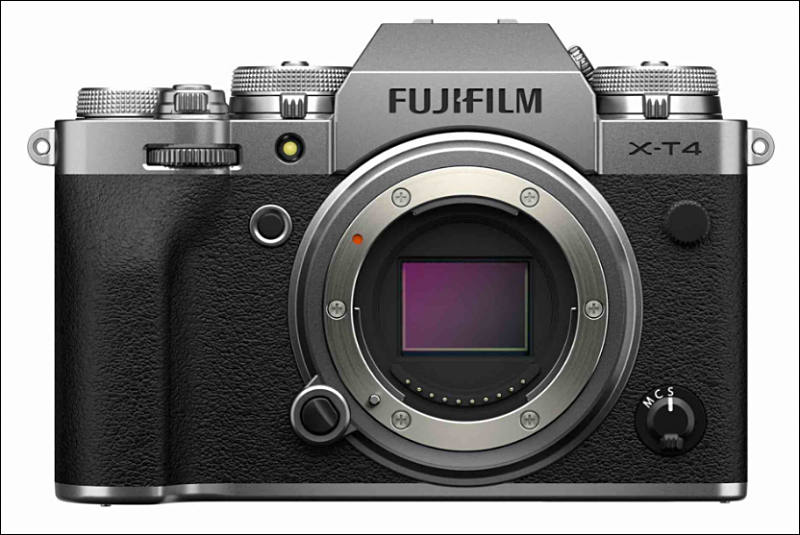
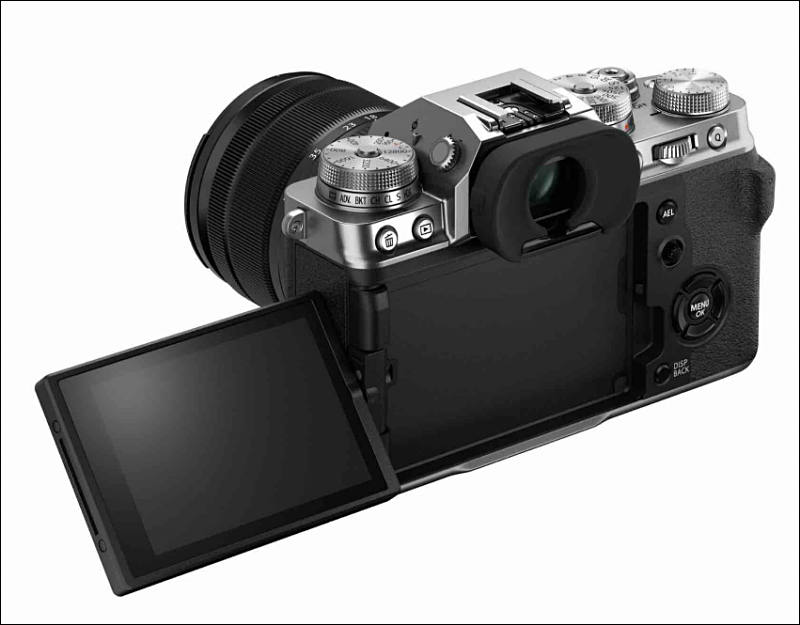
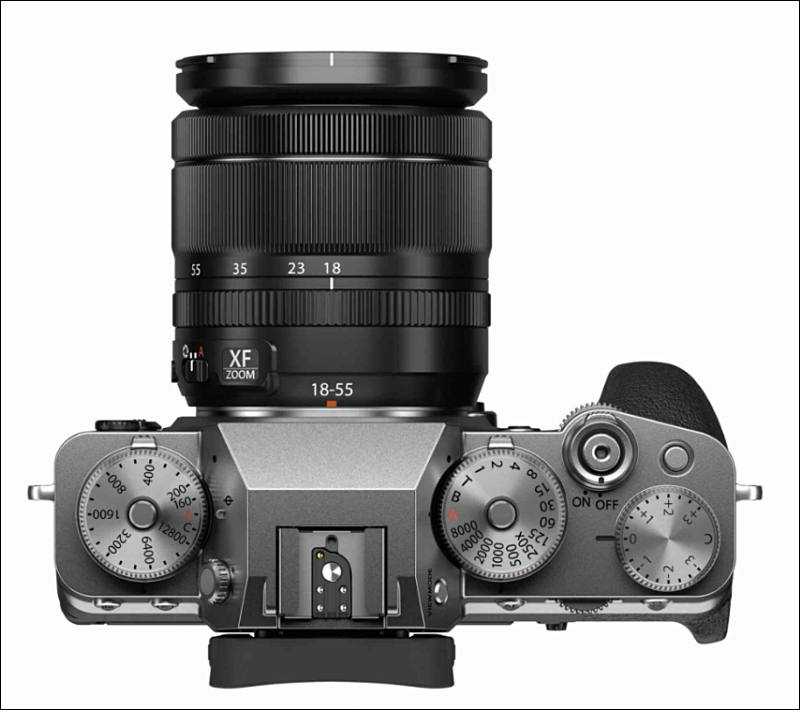

 sa12298.jpg800 x 535 - 65K
sa12298.jpg800 x 535 - 65K
 sa12299.jpg800 x 625 - 48K
sa12299.jpg800 x 625 - 48K
 sa12300.jpg800 x 710 - 63K
sa12300.jpg800 x 710 - 63K -
Seems like LSI is same old one.
-
So there's still a 30-minute record limit, that's a bummer.
Vitaliy, any news on whether they implemented 4:2:2 10-bit?
-
Specs
Image sensor
23.5mm x15.6mm (APS-C) X-Trans CMOS 4 with primary color filter. 26.1 millions pixels.
Storage media
SDXC memory card (-512GB) UHS-I / UHS-II / Video Speed Class V90
Movie
MOV (MPEG-4 AVC/H.264, HEVC/H.265, Audio: Linear PCM / Stereo sound 24bit / 48KHz sampling), MP4 (MPEG-4 AVC/H.264, Audio: AAC)
Movie Recording and Compression
All Intra/Long-GOP
DCI4K/4K 29.97p/25p/24p/23.98p 400Mbps Full HD (2048 x1080)/ Full HD (1920 x1080) 59.94p/50p/29.97p/25p/24p/23.98p 200Mbps
Movie File Size/Frame Rate/Rec. Time
- DCI 4K (4096 x2160) 59.94p/50p/29.97p/25p/24p/23.98p 400Mbps/200Mbps/100Mbps 59.94p/50p: up to approx. 20min. 29.97p/25p/24p/23.98p: up to approx. 30min
- 4K (3840 x2160) 59.94p/50p/29.97p/25p/24p/23.98p 400Mbps/200Mbps/100Mbps 59.94p/50p: up to approx. 20min. 29.97p/25p/24p/23.98p: up to approx. 30min\
- Full HD (2048 x1080) 59.94p/50p/29.97p/25p/24p/23.98p 200Mbps/100Mbps/50Mbps up to approx. 30min.
- Full HD (1920 x1080) 59.94p/50p/29.97p/25p/24p/23.98p 200Mbps/100Mbps/50Mbps up to approx. 30min.
- Full HD (1920 x1080) High speed rec. 240p / 200p 200Mbps(recording) up to approx. 3min. 120p / 100p 200Mbps(recording) up to approx. 6min.
Image Stabilizer Mechanism
Image sensor shift mechanism with 5-axis compensation
Image Stabilizer Compensation Effect
Maximum 6.5 stops (based on CIPA standard. Pitch/yaw shake only. With XF35mmF1.4 R lens mounted.)
Digital Image Stabilizer
Yes (movie mode only)
IS Mode Boost for movie mode only
Face and Eye detection AF
Movie Shutter
- FHD: 1/8000sec. to 1/4sec.
- DCI4K/4K: 1/8000sec. to 1/24sec. (depends on the frame rate)
Continous Shooting
- Approx. 30fps [Only electronic shutter, 1.25 x Crop ] (JPEG: 60 frames Lossless compressed RAW / Compressed RAW: 35 frames Uncompressed RAW: 33 frames)\
- Approx. 20fps [Only electronic shutter, 1.25 x Crop ] (JPEG: 114 frames Lossless compressed RAW / Compressed RAW: 37 frames Uncompressed RAW: 34 frames)\
- Approx. 10fps [Only electronic shutter, 1.25 x Crop ] (JPEG: 500 frames Lossless compressed RAW / Compressed RAW: 48 frames Uncompressed RAW: 39 frames)
- Approx. 20fps [Only electronic shutter ] (JPEG: 79 frames Lossless compressed RAW / Compressed RAW: 36 frames Uncompressed RAW: 34 frames)\
- Approx. 15fps (JPEG: 110 frames Lossless compressed RAW / Compressed RAW: 38 frames Uncompressed RAW: 35 frames)
- Approx. 10fps (JPEG: 164 frames Lossless compressed RAW / Compressed RAW: 44 frames Uncompressed RAW: 37 frames)
- Approx. 8fps (JPEG: 200 frames Lossless compressed RAW / Compressed RAW: 49 frames Uncompressed RAW: 39 frames)
Viewfinder
- 0.5 inch approx. 3.69 millions dots OLED Color Viewfinder\
- Coverage of viewing area vs. capturing area: approx. 100%\
- Eyepoint: approx. 23mm (from the eyepiece lens)\
- Diopter adjustment: -4-+2m-1 (lockable)\
- Magnification: 0.75 x with 50mm lens (35mm equivalent) at infinity and diopter set to -1m-1\
- Diagonal angle of view: approx. 38 Degree (Horizontal angle of view: approx. 30 Degree )\
- Built-in eye sensor
LCD monitor
- 3.0 inch, aspect ratio 3:2, approx. 1.62 millions dots touch screen color LCD monitor (approx. 100% coverage)
Wireless Transmitter Standard
IEEE802.11b/g/n (standard wireless protocol)
Bluetooth Standard
Bluetooth Ver 4.2 (Bluetooth low energy)
Terminal
- Digital interface: USB Type-C (USB3.2 Gen1x1)
- HDMI output: HDMI micro connector (Type D)
- Other: 3.5mm, stereo mini connector (Microphone) / 2.5mm, Remote Release Connector, Hot shoe, Synchronized terminal
Power supply
NP-W235 Li-ion battery (included)
Battery life for still images
Approx. 600 frames (Economy Mode), approx. 500 frames (Normal Mode) When XF35mmF1.4 R is set.
Actual battery life of movie capture Face detection is set to OFF
- [4K] approx. 85min. (29.97p)
- [Full HD] approx. 95min. (59.94p)
Continuance battery life
- Face detection is set to OFF
- [4K] approx. 110min. (29.97p)\
- [Full HD] approx. 130min. (59.94p) (movie capture)
Battery
Li-ion battery NP-W235
Dimensions (D x W x H)
63.8 x 134.6 x 92.8 mm
Weight
Approx. 607g (including battery and SD memory card) Approx. 526g (excluding battery and SD memory card)
-
Haha Fast charging battery, that's about 5 years overdue. Anyone see any word on the time limit?
-
OIS isnt enough in many situations. For instance it cannot correct rolling movements. A monopod doesn't do much when you need to move the camera (boom/truck/dolly etc). Works fine for panning and tilting. And does absolutely nothing when you're shooting in places that won't allow it.
-
According to Fuji Rumors, the XT-4 price will be $1700.
-
But when you can't use a monopod, IBIS works better than OIS for video, at least in my experience.
-
I dont think IBIS is important. A monopod can do a much better job. And a OIS lens is fine for handheld situations when you cannot use the monopod.
-
Bad move not using the LCD hinge from the XT-100 ou copied the Panasonic S1H. Both tilt and flip, please both still and video shooters.
-
Correction, XT-3 is 4:2:0 10-bit versus GH5/S1/SH1 4:2:2 10-bit.
4:2:2 plus unlimited recording time and decent dynamic range would make this an easy purchase for me.
Howdy, Stranger!
It looks like you're new here. If you want to get involved, click one of these buttons!
Categories
- Topics List23,993
- Blog5,725
- General and News1,354
- Hacks and Patches1,153
- ↳ Top Settings33
- ↳ Beginners256
- ↳ Archives402
- ↳ Hacks News and Development56
- Cameras2,368
- ↳ Panasonic995
- ↳ Canon118
- ↳ Sony156
- ↳ Nikon96
- ↳ Pentax and Samsung70
- ↳ Olympus and Fujifilm102
- ↳ Compacts and Camcorders300
- ↳ Smartphones for video97
- ↳ Pro Video Cameras191
- ↳ BlackMagic and other raw cameras116
- Skill1,960
- ↳ Business and distribution66
- ↳ Preparation, scripts and legal38
- ↳ Art149
- ↳ Import, Convert, Exporting291
- ↳ Editors191
- ↳ Effects and stunts115
- ↳ Color grading197
- ↳ Sound and Music280
- ↳ Lighting96
- ↳ Software and storage tips266
- Gear5,420
- ↳ Filters, Adapters, Matte boxes344
- ↳ Lenses1,582
- ↳ Follow focus and gears93
- ↳ Sound499
- ↳ Lighting gear314
- ↳ Camera movement230
- ↳ Gimbals and copters302
- ↳ Rigs and related stuff273
- ↳ Power solutions83
- ↳ Monitors and viewfinders340
- ↳ Tripods and fluid heads139
- ↳ Storage286
- ↳ Computers and studio gear560
- ↳ VR and 3D248
- Showcase1,859
- Marketplace2,834
- Offtopic1,320








